Android统一依赖管理
Arrom 人气:0简述
每个项目从新建开始我们或多或少都会导入各种依赖库,如果项目中只有一个module的话,对于依赖库版本的管理很容易,但是多个module的话,稍加不注意,很容易导入多个版本的库甚至产生版本冲突,更新修改依赖库也需要多处操作,所以我们需要对依赖库版本进行统一管理。
传统apply from的方式(也是我以前项目中使用)
为了对模块进行统一管理,会在根目录新建一个config.gradle文件或者在根目录的build.gradle定义一些变量
ext {
android = [
compileSdkVersion : 29,
buildToolsVersion : "30.0.2",
applicationId : "com.xionggouba.bearseller",
minSdkVersion : 19,
targetSdkVersion : 30,
versionCode : 27,
versionName : "3.9.1",
defaultPublishConfig: 'release',
publishNonDefault : true,
multiDexEnabled : true,
mapKey : 'c7e1ee468aa1bf8a6739',
pushKey : '65aae199a0059eb1dbe7',
pushChannel : 'developer-default',
]
appid = [
app : "com.xionggouba.bearseller",
login : "com.huitao.login",
home : "com.huitao.home",
webview : "com.huitao.webview",
main : "com.huitao.main",
productManager: "com.huitao.productmanager",
personal : "com.huitao.personalcenter",
map : "com.huitao.map",
bluetooth : "com.huitao.bluetooth",
push : "com.huitao.push",
markketing : "con.huitao.marketing",
printer : "com.huitao.printer"
]
versions = [
"lifecycle_version": "2.2.0",
"arch_version" : "2.1.0",
"retrofit_version" : "2.6.2",
"dialog_version" : "3.3.0",
"glide_version" : "4.9.0",
"hilt" : "2.28-alpha",
"kotlin_version" : "1.4.10",
"fragment_version" : "1.2.5",
"room_version" : "2.2.6"
]
architecture = [
"viewmodel" : "androidx.lifecycle:lifecycle-viewmodel-ktx:${versions['lifecycle_version']}",
"livedata" : "androidx.lifecycle:lifecycle-livedata-ktx:${versions['lifecycle_version']}",
"lifecycleruntime" : "androidx.lifecycle:lifecycle-runtime-ktx:${versions['lifecycle_version']}",
"savedstate" : "androidx.lifecycle:lifecycle-viewmodel-savedstate:${versions['lifecycle_version']}",
// alternately - if using Java8, use the following instead of lifecycle-compiler
"lifecyclecommon" : "androidx.lifecycle:lifecycle-common-java8:${versions['lifecycle_version']}",
// Saved state module for ViewModel
"viewmodelsavedstate": "androidx.lifecycle:lifecycle-viewmodel-savedstate:${versions['lifecycle_version']}",
"lifecycleextentions": "androidx.lifecycle:lifecycle-extensions:${versions['lifecycle_version']}",
"retrofit2" : "com.squareup.retrofit2:retrofit:${versions['retrofit_version']}",
"gson" : "com.squareup.retrofit2:converter-gson:${versions['retrofit_version']}",
"persistentcookiejar": "com.github.franmontiel:PersistentCookieJar:v1.0.1",
"glide" : "com.github.bumptech.glide:glide:${versions['glide_version']}",
"glidecompiler" : "com.github.bumptech.glide:compiler:${versions['glide_version']}",
"oss" : "com.aliyun.dpa:oss-android-sdk:2.9.1",
"luban" : "top.zibin:Luban:1.1.8"
]
]在工程的根目录build.gradle添加
apply from"config.gradle"
找一个东西就得靠搜索,逐一查找。
buildSrc方式
什么是buildSrc
当运行 Gradle 时会检查项目中是否存在一个名为 buildSrc 的目录。然后 Gradle 会自动编译并测试这段代码,并将其放入构建脚本的类路径中, 对于多项目构建,只能有一个 buildSrc 目录,该目录必须位于根项目目录中, buildSrc 是 Gradle 项目根目录下的一个目录,它可以包含我们的构建逻辑,与脚本插件相比,buildSrc 应该是首选,因为它更易于维护、重构和测试代码
小结
buildSrc在近几年时非常流行的,因为它共享 buildSrc 库工件的引用,全局只有一个地方可以修改它,支持自动补全(这个很爽),支持跳转。 但是他也有一个缺点,依赖更新将重新构建整个项目,这个不是很好。
Composing builds
什么是Composing builds
复合构建只是包含其他构建的构建. 在许多方面,复合构建类似于 Gradle 多项目构建,不同之处在于,它包括完整的 builds ,而不是包含单个 projects
- 组合通常独立开发的构建,例如,在应用程序使用的库中尝试错误修复时
- 将大型的多项目构建分解为更小,更孤立的块,可以根据需要独立或一起工作
小结
这种方式拥有buildSrc的优点,同时依赖更新不用重新构建整个项目。
Composing builds项目实战
在项目中新建一个model,用于管理配置信息
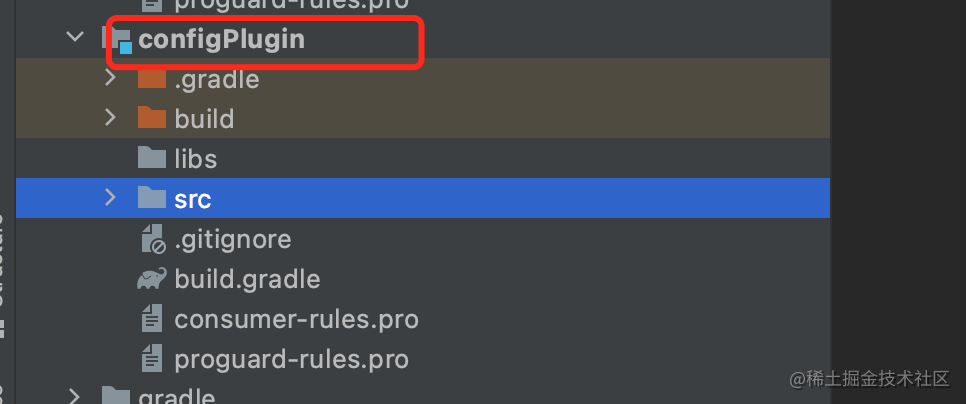
新建一个ConfigPlugin的类,不用具体的实现
class ConfigPlugin: Plugin<Project> {
override fun apply(p0: Project) {
}
companion object{
}
}编辑configPluginmodel中的build.gradle文件
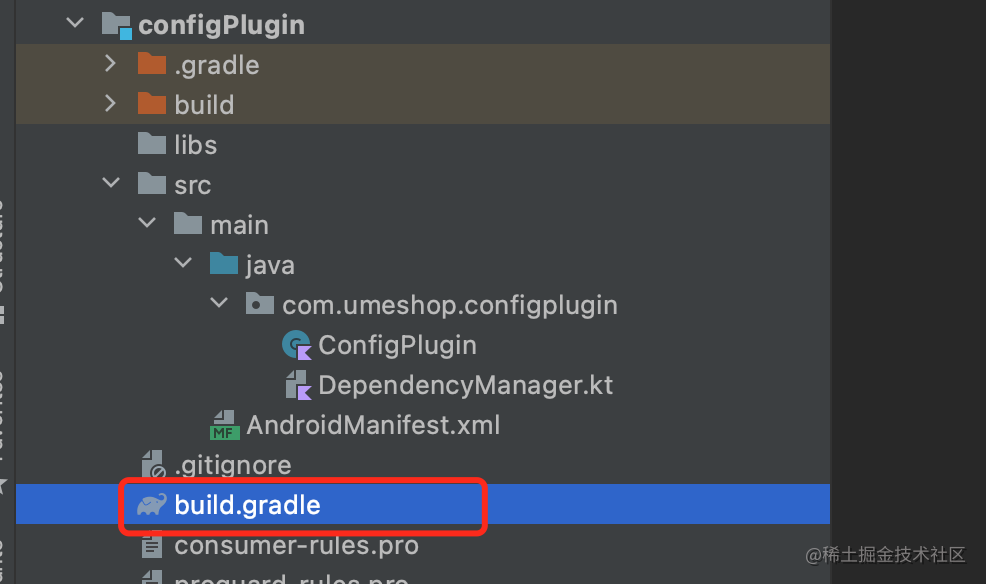
我的文件大致内容如下
buildscript {
repositories {
jcenter()
}
dependencies {
// 因为使用的 Kotlin 需要需要添加 Kotlin 插件
classpath "org.jetbrains.kotlin:kotlin-gradle-plugin:1.6.10"
}
}
apply plugin: 'kotlin'
apply plugin: 'java-gradle-plugin'
repositories {
// 需要添加 jcenter 否则会提示找不到 gradlePlugin
jcenter()
google()
}
dependencies {
implementation gradleApi()
implementation "org.jetbrains.kotlin:kotlin-gradle-plugin:1.6.10"
}
compileKotlin {
kotlinOptions {
jvmTarget = "1.8"
}
}
compileTestKotlin {
kotlinOptions {
jvmTarget = "1.8"
}
}
gradlePlugin {
plugins {
version {
// 在 app 模块需要通过 id 引用这个插件
id = 'com.umeshop.configplugin'
// 实现这个插件的类的路径
implementationClass = 'com.umeshop.configplugin.ConfigPlugin'
}
}
}修改根目录的settings.gradle文件
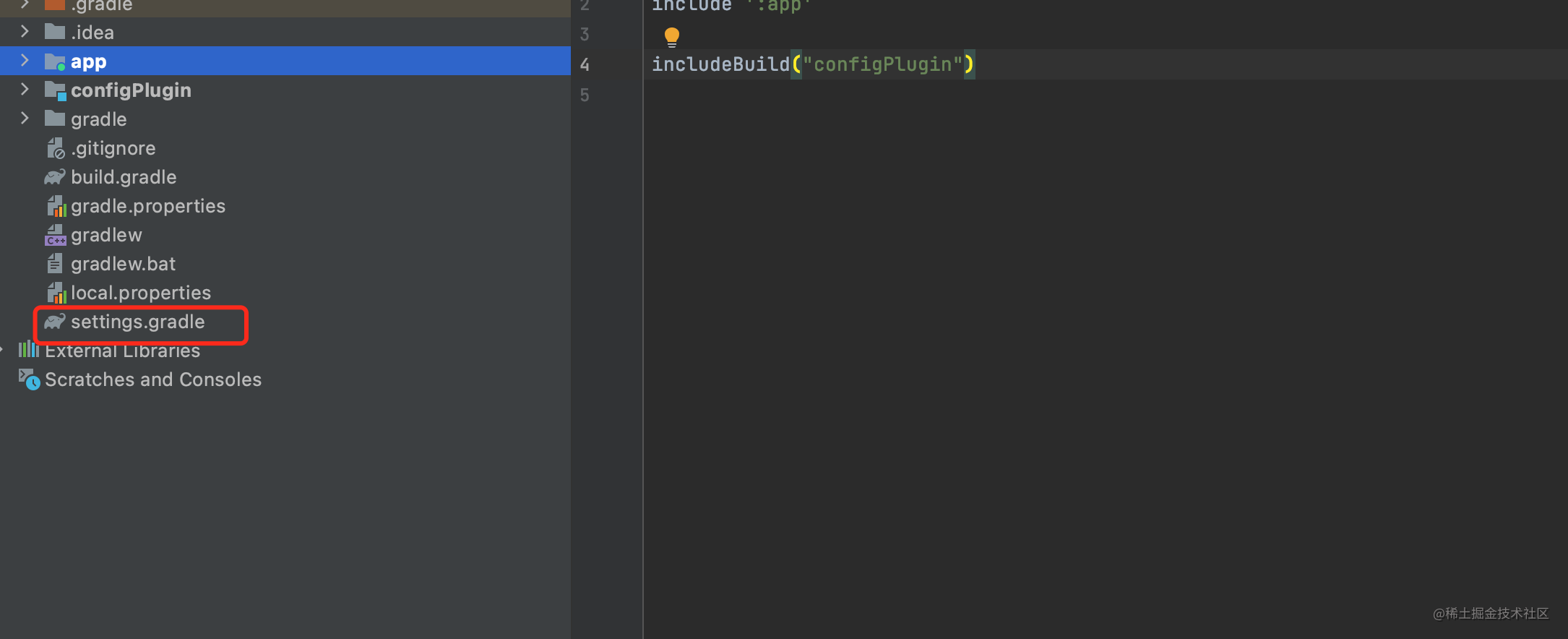
项目目录引入插件
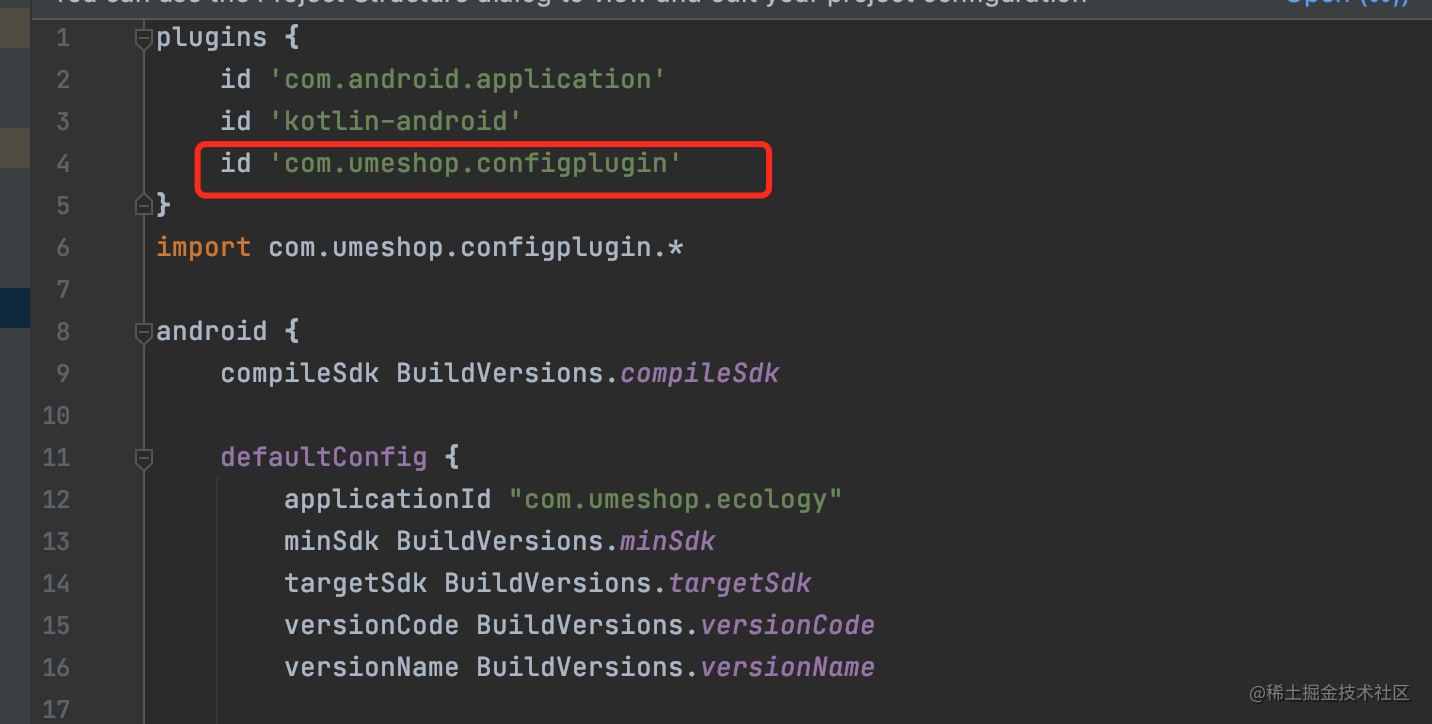
在configPluginmodel中定义一个DependencyManager文件来管理一些第三方的依赖
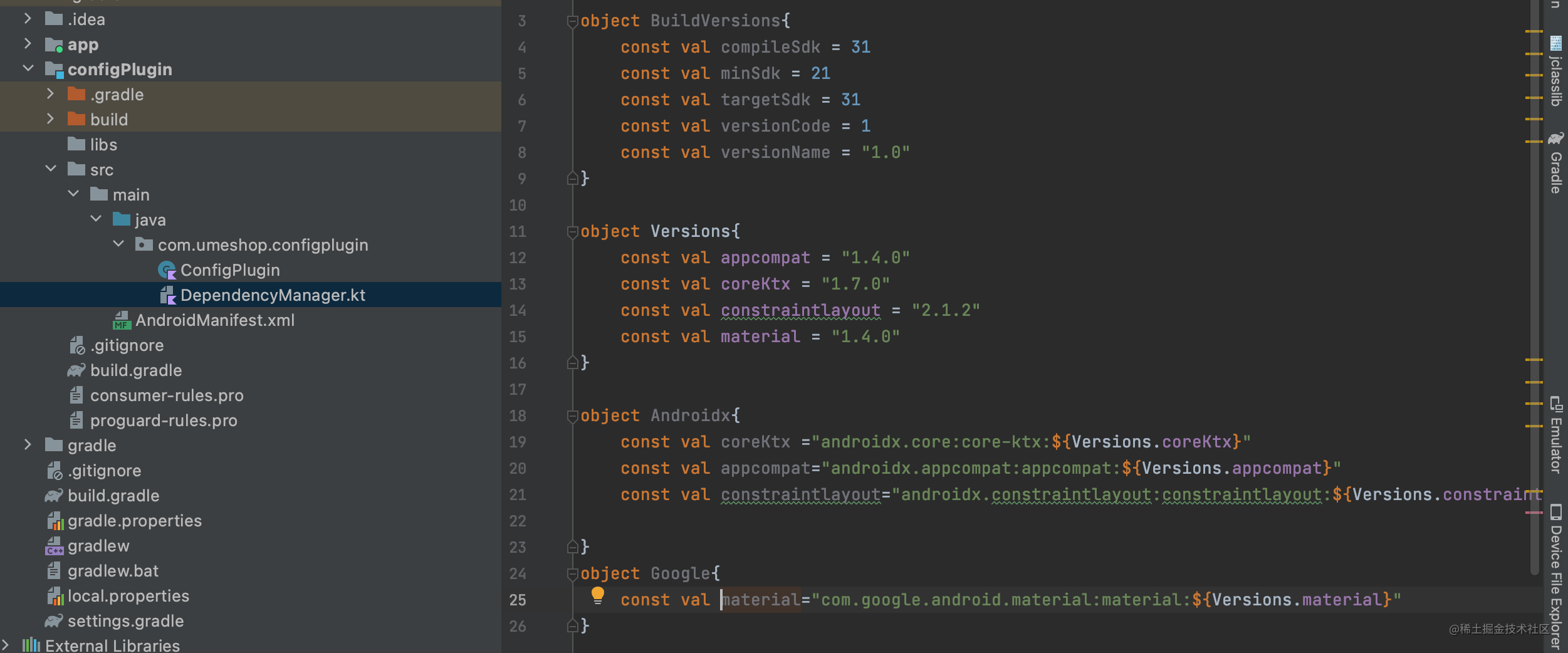
在使用目录导入
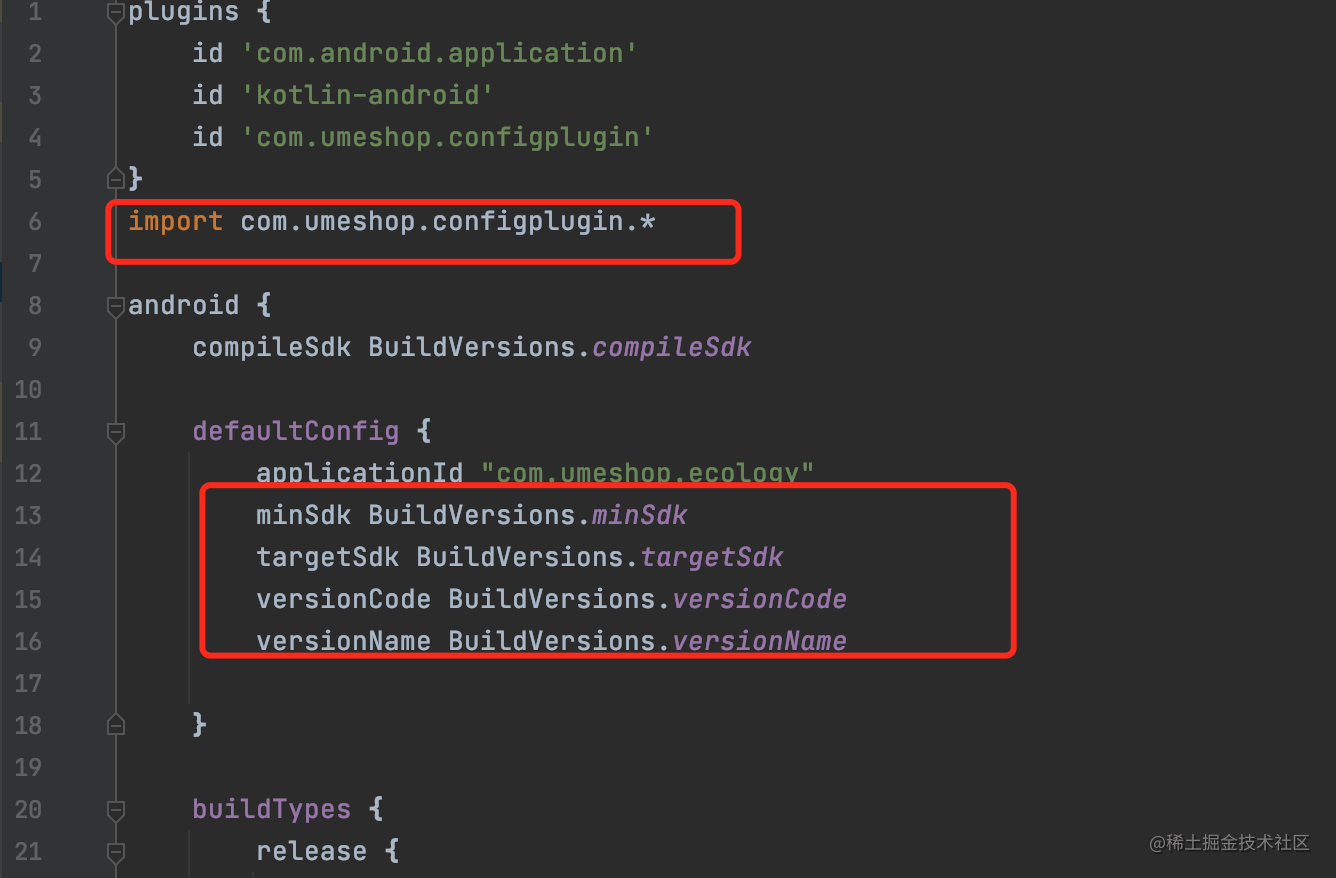
大致流程介绍完成
需要注意的地方
根目录的settings.gradle的配置
dependencyResolutionManagement {
repositoriesMode.set(RepositoriesMode.FAIL_ON_PROJECT_REPOS)
repositories {
google()
mavenCentral()
jcenter() // Warning: this repository is going to shut down soon
}
}
rootProject.name = "jetpackDemo"
include ':app'有些版本是这样的,建议删除dependencyResolutionManagement的配置,在build.gradle中配置。大致是这样的
allprojects {
repositories {
google()
mavenCentral()
jcenter() // Warning: this repository is going to shut down soon
}
}还有一个就是依赖的修改
includeBuild("configPlugin")是includeBuild标签,不是include
总结
加载全部内容